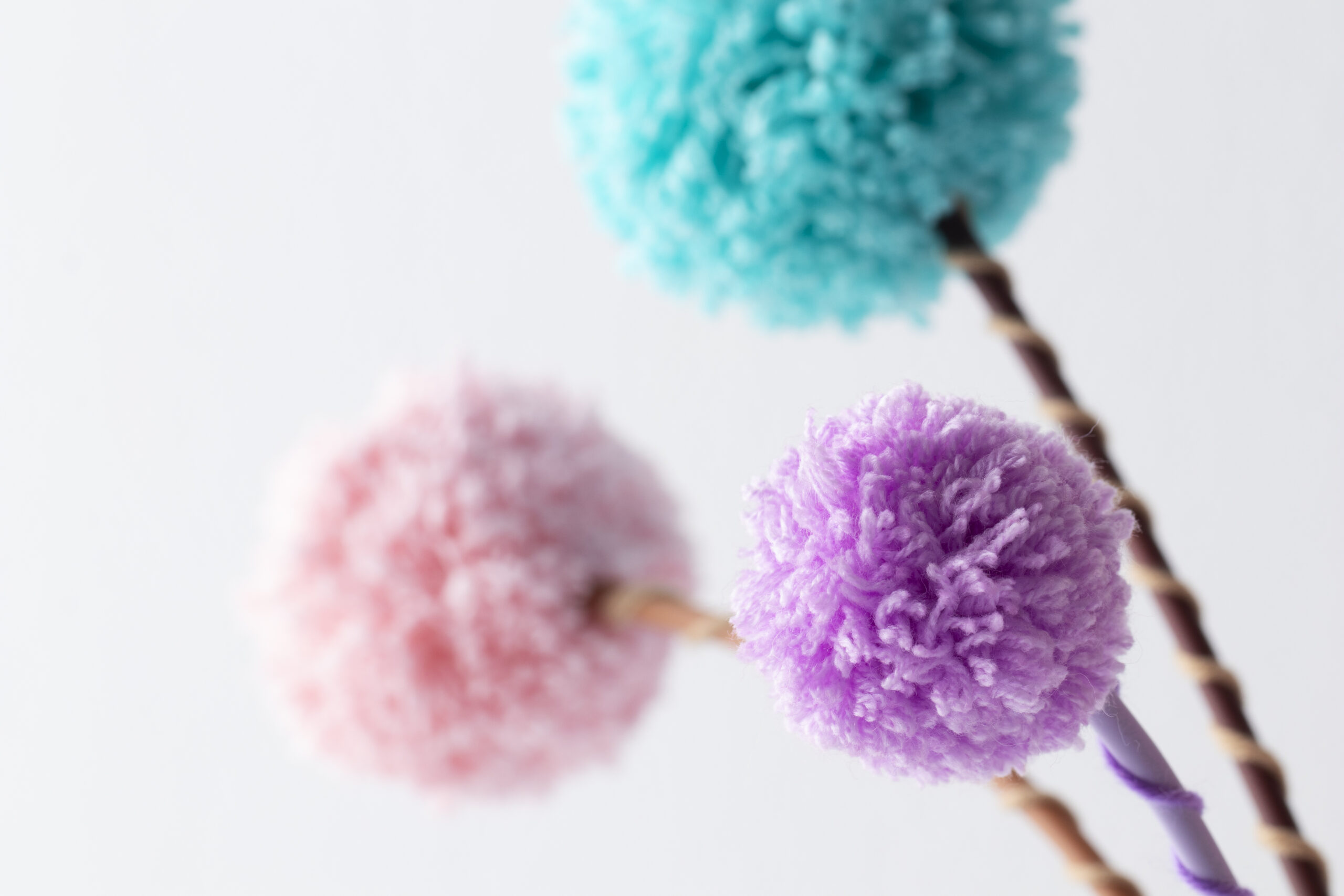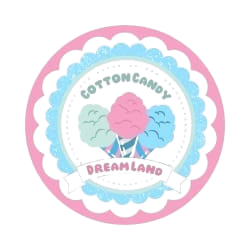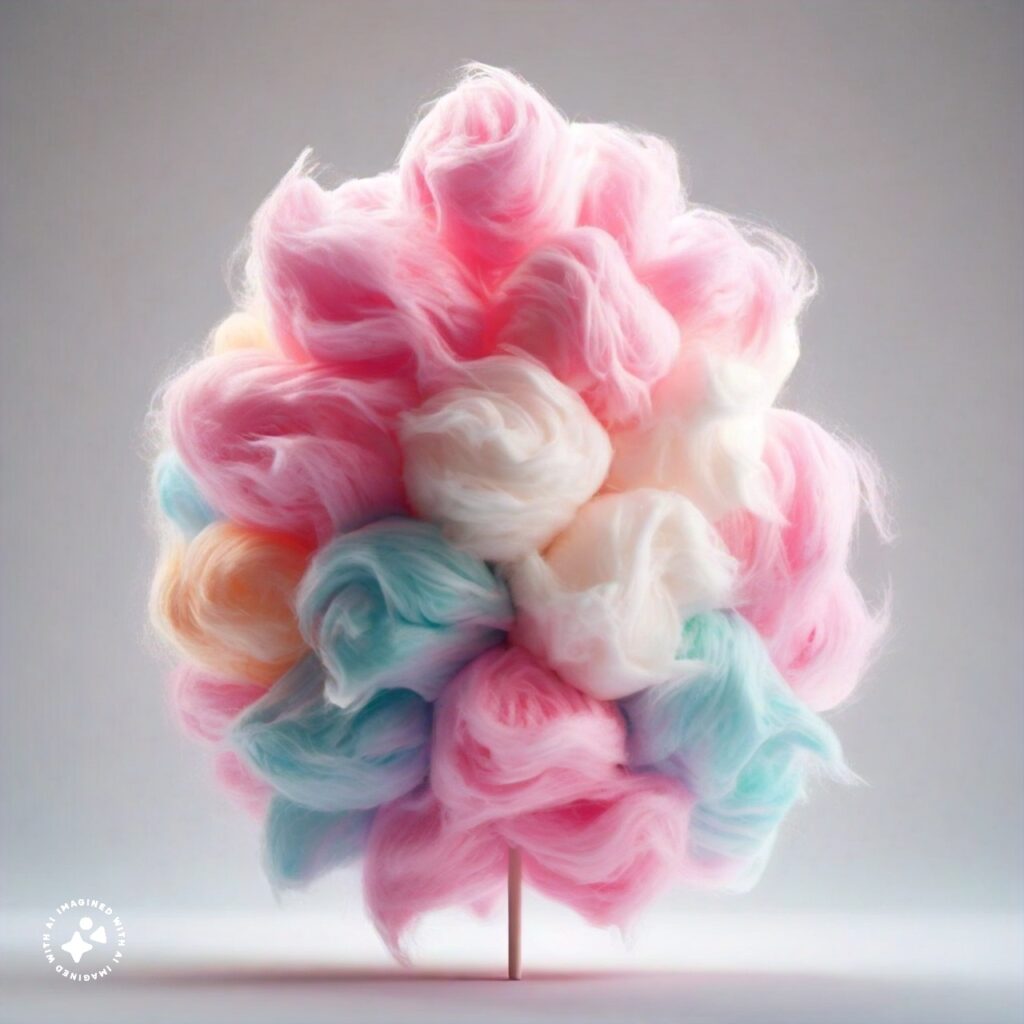Cotton candy flowers are an enchanting blend of sweet delight and visual beauty. These sugary treats, spun into delicate floral shapes, captivate both the eyes and the taste buds. They are perfect for adding a whimsical touch to any event, from weddings to birthday parties. In this comprehensive guide, we’ll explore the origin, creation process, varieties, and uses of cotton candy flowers. Additionally, we’ll provide a detailed guide on how to make them at home and address some frequently asked question.Cotton candy flowers are a unique and artistic take on the traditional spun sugar treat, offering both a visual and flavorful delight. These handcrafted sweets are made by layering delicate strands of cotton candy into flower-like shapes, creating a beautiful and tasty masterpiece. Whether used as a centerpiece at parties or a fun DIY project, cotton candy flowers add a whimsical touch to any event.
How Cotton Candy Flowers Are Made
Creating cotton candy flowers requires precision and skill. The process involves spinning the cotton candy onto a stick while carefully shaping it into delicate petal-like formations. Professional cotton candy artists use various techniques to manipulate the sugary strands, sometimes adding different colors to create vibrant floral effects. The result is an edible work of art that melts in your mouth.
Why Cotton Candy Flowers Are Popular
These decorative treats have gained popularity at weddings, birthday parties, and themed events due to their eye-catching appearance and delicious taste. Unlike traditional cotton candy, which is often served in simple cones, cotton candy flowers elevate the experience by adding an element of elegance and creativity. Their light and fluffy texture make them a delightful treat for guests of all ages.
Making Cotton Candy Flowers at Home
While professional cotton candy machines make it easier to create intricate designs, you can still attempt making cotton candy flowers at home with a standard cotton candy machine. By carefully layering and twisting the spun sugar, you can form petal shapes and experiment with colors and flavors. The key is to work quickly before the cotton candy hardens, ensuring a delicate and airy structure.
The Origin of Cotton Candy Flowers

A Sweet History
Cotton candy, also known as candy floss or fairy floss, has a rich history dating back to the late 19th century. It was first introduced at the 1904 World’s Fair in St. Louis, Missouri, by confectioners William Morrison and John C. Wharton. This sugary treat quickly became a popular staple at fairs and carnivals. The innovation of Sweet spun blooms is a modern twist on this classic treat, combining the nostalgic appeal of cotton candy with the elegance of floral designs.
Evolution into Floral Art
The idea of shaping cotton candy into flowers likely stemmed from the desire to make this sweet treat even more visually appealing. Confectioners began experimenting with different techniques to spin and shape the cotton candy into delicate flower petals. Today, these edible flowers are a testament to the creativity and skill of artisans who transform simple sugar into intricate works of art.
How Cotton Candy Flowers Are Made

The Art of Spinning Sugar
Creating cotton candy flowers is an art that requires precision and creativity. The process begins with sugar, which is heated until it melts and then spun at high speed in a cotton candy machine. The centrifugal force pushes the liquid sugar through tiny holes, creating thin strands of cotton candy.
Shaping the Petals
Once the cotton candy is spun, the next step is shaping it into petals. This involves carefully collecting the strands and manipulating them into the desired floral shapes. Skilled artisans use various techniques, such as layering and twisting, to create realistic-looking petals. The process requires a steady hand and an eye for detail to ensure each flower is perfect.
Adding Colors and Flavors
To enhance the visual appeal and taste, food coloring and flavoring are added to the sugar before spinning. This allows for a wide range of vibrant colors and delicious flavors. Popular choices include traditional flavors like vanilla and strawberry, as well as more exotic options like lavender and rose.
Varieties and Flavors of Cotton Candy Flowers

Traditional Flavors
Traditional cotton candy flavors remain popular due to their familiar and comforting taste. These include:
Vanilla
: A classic choice with a sweet, creamy taste.Strawberry
: Offers a fruity, refreshing flavor.Blueberry
: Known for its rich, deep flavor.
Exotic Flavors
In recent years, adventurous confectioners have introduced a variety of exotic flavors, such as:
Lavender
: Provides a unique, aromatic experience.Rose
: Delivers a delicate, floral taste.Champagne:
Adds a touch of luxury with a bubbly finish.
Custom Flavors
For special events, custom flavors can be created to match the theme or preferences of the guests. This level of customization makes cotton candy flowers a versatile and unique treat for any occasion.
The Versatility of Cotton Candy Flowers
Weddings
Cotton candy flowers are a popular choice for weddings due to their romantic and whimsical appearance. They can be used in various ways:
Centerpieces:
Add a sweet touch to the reception tables.
Wedding Favors:
Delight guests with a unique and edible gift.
Dessert Tables: Complement the wedding cake and other desserts.
Birthday Parties
For birthday parties, especially children’s parties, cotton candy flowers bring a sense of fun and excitement. They can be customized to match the party’s theme and colors, making them a hit with both kids and adults.
Baby Showers
Cotton candy flowers are a charming addition to baby showers. Their delicate appearance and sweet taste make them perfect for celebrating the arrival of a new baby. They can be used as decorations, favors, or even as part of a gender reveal.
Corporate Events
In corporate settings, cotton candy flowers can serve as a unique and memorable treat. They are great for product launches, conferences, and company celebrations. Their novelty can help make the event more engaging and enjoyable for attendees.
How to Make Cotton Candy Flowers at Home

Gather Your Ingredients and Tools
To make cotton candy flowers at home, you’ll need the following:
Cotton Candy Machine:
Essential for spinning the sugar into thin strands.
Sugar
- : Plain granulated sugar works best.
Food Coloring and Flavoring
- : To customize the colors and flavors of your flowers.
Cones or Sticks:
- For collecting and shaping the cotton candy.
Step-by-Step Guide
Prepare the Cotton Candy Machine: Follow the manufacturer’s instructions to set up and preheat your machine.
Color and Flavor the Sugar:
Mix food coloring and flavoring with the sugar before adding it to the machine.
Spin the Sugar:
- Pour the sugar into the machine and start spinning. Use a cone or stick to collect the cotton candy.
Shape the Petals:
- As you collect the cotton candy, shape it into petals. This step requires patience and practice.
Assemble the Flower:
- Combine the petals to form a complete flower. Use additional spun sugar to secure the petals together.
Tips for Success
Practice Makes Perfect:
- Shaping the petals can be challenging, so practice is key.
Keep It Cool:
- Cotton candy is sensitive to humidity and heat. Work in a cool, dry environment for the best results.
Experiment with Colors and Flavors: Don’t be afraid to get creative with different combinations of colors and flavors.
Health Considerations
Moderation is Key
While cotton candy flowers are a delightful treat, they should be enjoyed in moderation. They are primarily made of sugar, which can impact your health if consumed in excess. Balance your diet and enjoy these sugary flowers as an occasional indulgence.
Sugar and Dental Health
Consuming too much sugar can lead to dental problems such as cavities and tooth decay. It’s important to maintain good oral hygiene and limit your intake of sugary treats.
Alternative Sweeteners
For those looking to reduce their sugar intake, alternative sweeteners can be used to make cotton candy flowers. These options may provide a lower-calorie treat without sacrificing the taste.
Conclusion
Cotton candy flowers are a captivating blend of art and confectionery. Their unique appearance and delicious taste make them a standout treat for any occasion. Whether you’re looking to add a whimsical touch to your event or simply enjoy a sweet treat, cotton candy flowers are sure to impress. With a bit of practice and creativity, you can even make these delightful flowers at home. Enjoy them in moderation and let their sweet charm brighten your celebrations.
Frequently Asked Questions (FAQs)
What are cotton candy flowers?
Cotton candy flowers are a type of confectionery where cotton candy is spun and shaped into the form of flowers. They combine the sweet taste of cotton candy with the visual appeal of floral designs.
Can I make cotton candy flowers at home?
Yes, you can make cotton candy flowers at home with the right tools and ingredients. You’ll need a cotton candy machine, sugar, food coloring, flavoring, and some practice to perfect the technique.
What flavors are available for cotton candy flowers?
Cotton candy flowers come in a variety of flavors, including traditional options like vanilla, strawberry, and blueberry, as well as exotic flavors like lavender, rose, and champagne. Custom flavors can also be created for special events.
Are cotton candy flowers suitable for all occasions?
Yes, cotton candy flowers are versatile and can enhance any event. They are ideal for weddings, birthday parties, baby showers, corporate events, and more.
How long do cotton candy flowers last?
Cotton candy flowers are best enjoyed fresh. They can last for a few hours when kept in a cool, dry environment. However, humidity and heat can cause them to melt and lose their shape.
Are cotton candy flowers healthy?
Cotton candy flowers are primarily made of sugar and should be enjoyed in moderation. Excessive consumption can lead to dental problems and other health issues. It’s important to balance your diet and practice good oral hygiene.
Can I use alternative sweeteners to make cotton candy flowers?
Yes, alternative sweeteners can be used to make cotton candy flowers. These options may provide a lower-calorie treat without sacrificing the taste. However, not all sweeteners may work well in a cotton candy machine, so some experimentation may be needed.
Where can I buy cotton candy flowers?
Cotton candy flowers can be found at specialty confectionery shops, online retailers, and some event vendors. They can also be custom-made for special occasions.
What makes cotton candy flowers different from regular cotton candy?
The main difference is the shape and presentation. Cotton candy flowers are spun and shaped into intricate floral designs, making them more visually appealing than regular cotton candy. They also come in a wider variety of flavors and colors.
How do I store cotton candy flowers?
To store cotton candy flowers, keep them in a cool, dry place away from humidity and heat. They are best enjoyed fresh, so it’s recommended to prepare or purchase them close to the time they will be consumed.









1 thought on “Cotton Candy Flowers: A Comprehensive Guide”